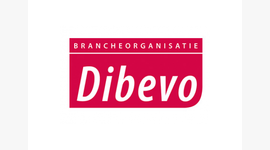DTC Evolution as CPG Companies Branch Out
Nieuwsbericht
Bron: RedPoint Global
Consumer Packaged Goods (CPG) -bedrijven vertrouwen van oudsher op hun handelspartners om de last mile voor de consument te creëren en ontbrak daarom aan een diep begrip van consumentengedrag en voorkeuren. Eerder was de transactie volledige trade off; terwijl het CPG-merk niet in de last mile hoefde te investeren, plukte de retailer de vruchten van het vastleggen van klantgegevens en van een directe verbinding met de consument. Voor sommige CPG-bedrijven begint de relatie met handelspartners scheuren te vertonen. Een hele reeks breuklijnen moedigt CPG-merken aan om die last-mile-investeringen te doen en een directe relatie met de klant tot stand te brengen. Sommige noemen het de 'retail-apocalyps' gemarkeerd door winkelsluitingen zoals we die de laatste tijd veelvuldig zien.

Consumer Packaged Goods (CPG) companies have traditionally relied on their retail partners to create the last mile to the consumer, and therefore lacked a deep understanding of consumer behaviors and preferences.
Previously the transaction was wholly a trade-off; while the CPG brand did not have to invest in the last mile, the retailer reaped the rewards of capturing customer data to establish a direct connection with the consumer.
For some CPG companies, the traditional relationship with a retail partner is fracturing. A bevy of fault lines is spurring CPG brands to make those last-mile investments and establish a direct relationship with the customer. Among them are what some refer to as the “retail apocalypse” marked by store closings, including the shuttering of an estimated 8,600 brick-and-mortar locations in 2017.
A brand today cannot rely on a single distribution channel. Even with a strong retail partner, the concept of go-to-market exclusivity is fading. In today’s omnichannel environment, where an empowered consumer has an unlimited choice about how and when they interact with a brand, brands need to engage with customers at any point of a customer journey.
Establishing direct-to-consumer (DTC) channels such as a website, mobile apps, email marketing automation systems, call centers, physical direct mail, and SMS texts provide a brand with a wealth of customer data that it can use to achieve a better understanding of consumer behaviors, preferences, and intent. Savvy brands that know everything there is to know about a customer can then begin to compete on customer experience (CX) by providing a personalized experience across channels.
A Direct Connection, Direct Results
DTC trailblazers are seeing results. Nike CEO Mike Parker recently reported that the company achieved its first-ever $1 billion quarter in digital sales, up 36 percent from the previous quarter. Much of the success, Parker said, is attributable to Nike creating a “seamless bridge from physical shopping to digital efforts” that rewards Nike+ members with personalized offers and messages. Establishing a direct consumer relationship has also helped spur retail sales, with more than half of transactions at the company’s flagship “Innovation” retail outlets now from Nike+ customers.
Nike is far from an anomaly. Its experience just highlights how far consumer expectations have evolved. In a recent infographic “Customer Engagement: CPG Direct to Consumer” RedPoint outlines several trends driving these expectations.
According to Interactive Advertising Bureau (IAB), two-thirds of consumers expect direct brand connectivity and more than half of consumers go directly to a brand’s website with an intent to buy. Establishing DTC channels enhances the customer experience by the mere fact of providing customers with the omnichannel experience they expect; the Nike experience also shows that real differentiation comes from the personalization of the experience with relevant offers, notifications, or recommendations at the cadence of the customer across the omnichannel journey. Personalization is the “secret sauce” that attracts and keeps customers beyond merely providing additional purchasing outlets.
In the recent “Gaps in Customer Experience” Harris Poll commissioned by RedPoint Global, 53 percent of consumers surveyed said that they expect a brand to know their buying habits and preferences and should be able to anticipate their needs. Further, 37 percent said they would stop doing business with a company that doesn’t offer a personalized experience.
Differentiation is derived from utilizing data for a personalized customer experience. Direct brand interactions provide a brand with valuable information about customer buying patterns and preferences. Consumers willingly provide this data in exchange for a personalized experience that recognizes them at the moment of interaction, regardless of channel. A successful DTC approach understands that the channel itself – whether a website, a mobile app or other DTC avenue – is just a component of a larger strategy that includes real time as a central pillar.
The Evolution of the Brand-Retailer Partnership
Because DTC done right is an all-in commitment, some brands exercise caution because of a concern that a DTC engagement model will kill the golden goose by irrevocably harming the partnership with a retailer. The risk of store closings alone should be enough to overcome the tug of loyalty.
Yeti, the outdoor recreational equipment and lifestyle brand, is a good example. In its IPO prospectus, the brand cited the 2016 bankruptcy of Sports Authority and ensuing price liquidation on Yeti products, along with inventory stockpile from other retail partners, as partly responsible for a 22 percent revenue decline in 2017. Yeti then re-doubled its DTC focus, leading to a 48 percent increase in DTC sales in 2018.
Store closings aside, the caution is largely unfounded. While on its face it might appear that a direct purchase on a brand’s website will cannibalize a sale from a retailer, a non-linear customer journey is not a zero-sum game. Omnichannel buying journeys are dynamic; a customer may visit a brand website before purchasing at a retail location. Or a customer might buy online before picking up the product in-store (BOPIS), generating an additional sale when they receive a personalized and timely offer.
DTC augments the in-store experience, creating additional foot traffic where consumers still spend roughly 90 percent of their retail dollars. This past holiday season, more than 40 percent of millennials (and more than 30 percent of Gen Xers and Boomers) engaged in webrooming – researching a product online before buying at a physical store.
In addition to helping increase in-store traffic, DTC can help a retailer by the brand providing invaluable insight and market test data to a retail partner, which turns the previous relationship on its head. Now, it’s the brand that has a single view of a customer from data collected across an omnichannel path-to-purchase experience, data that behooves both the brand and the retailer and holds more value to the retailer than a potential loss of direct sales to the brand.
To minimize any potential conflict with a retailer, CPG companies must have a clearly defined strategy for what they wish to accomplish by exploiting every last mile available to the consumer. The most important consideration is that a DTC channel provides clear value to the customer and does not introduce friction to the customer journey.
Taking Control of the Customer Journey
Many retailers wonder how or where to start with providing a differentiated DTC experience, at least beyond basic e-commerce or mobile app offerings. A single view of the customer with a customer data platform is an integral piece. A golden customer record does more than integrate data sources, however. Rather, it’s a continuously updated record that includes any information pertaining to a customer’s behaviors, interests, preferences, needs, purchases, and intentions compiled from multiple customer engagement systems and data sources (anonymous to known, structured to unstructured, online and offline) to create a complete, 360-degree view that persists over time.
Armed with a single view, a brand can optimize engagements with the RedPoint Customer Engagement Hub (CEH), which leverages in-line analytics and real-time decisioning to drive personalization at scale. The CEH operationalizes the golden record, delivering the next best action or recommendation to a customer in the perfect context and cadence.
It gives the brand a single point of control over data, decisions, and interactions that hyper-personalize a customer experience and make the customer want to keep coming back for more. The fluid, omnichannel buying journey is here, and unless a brand shows a customer that it cares about them along every mile of a dynamic journey, the customer may have switched brands by the time that all-important last mile comes into play.












